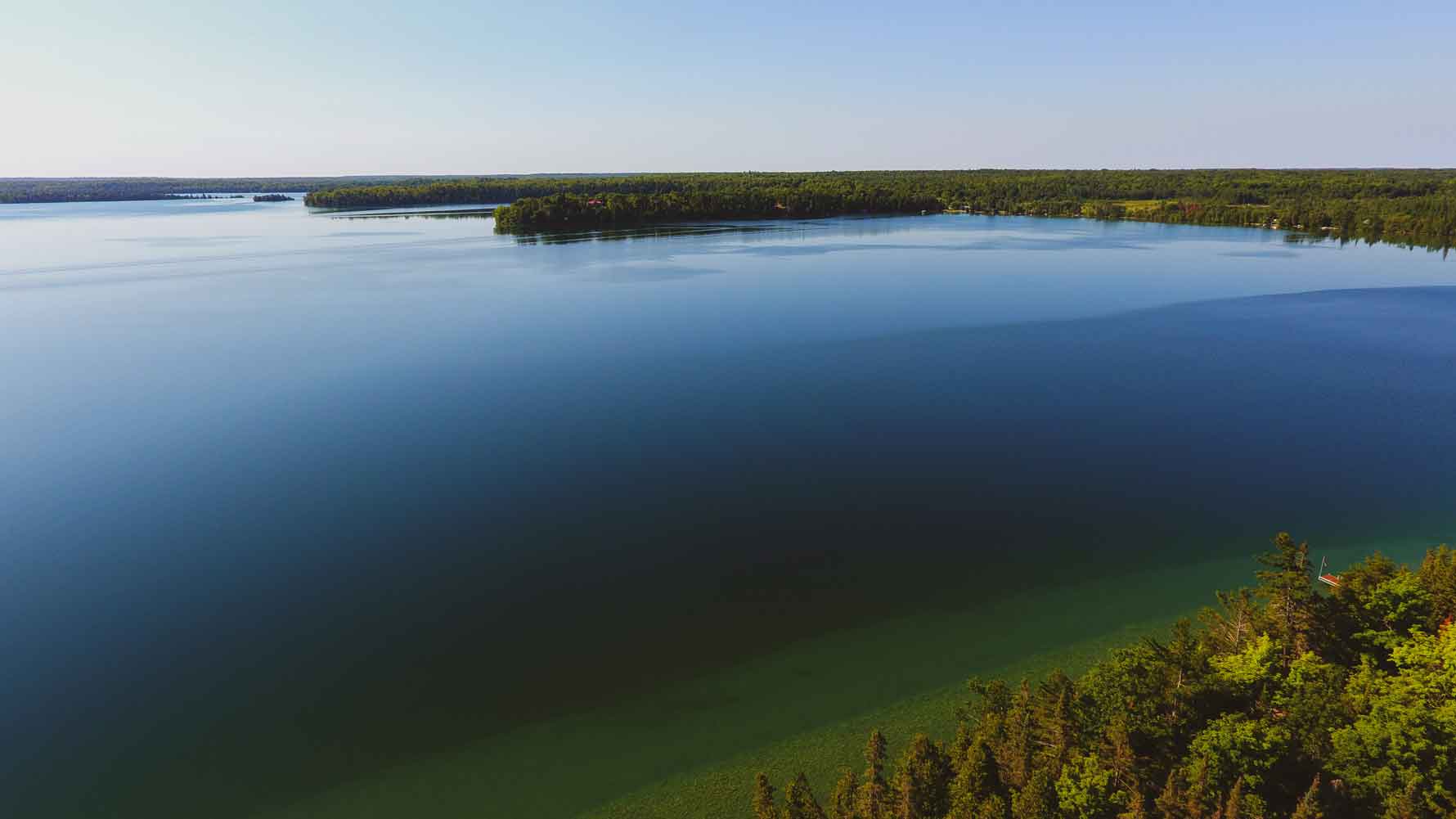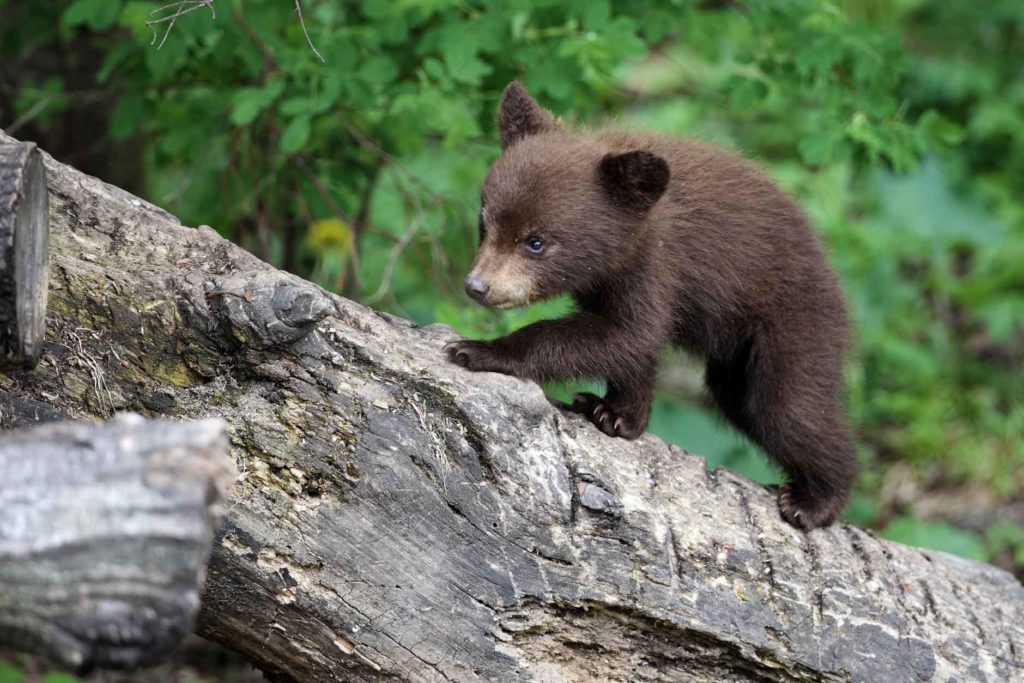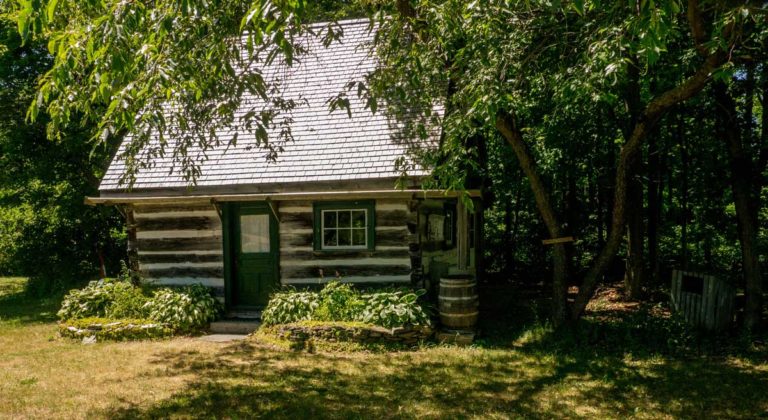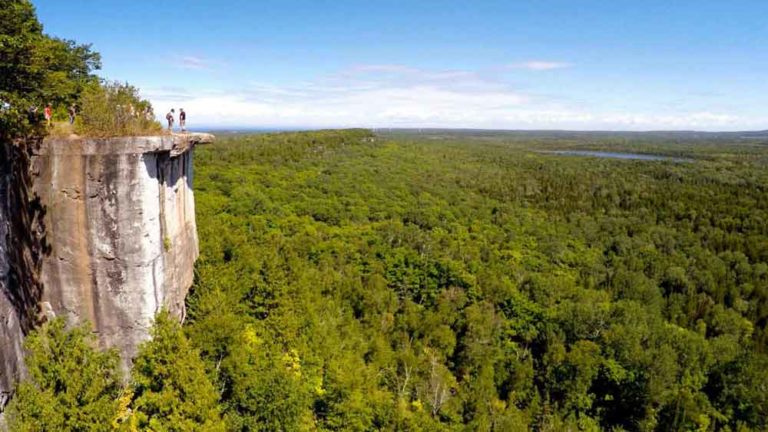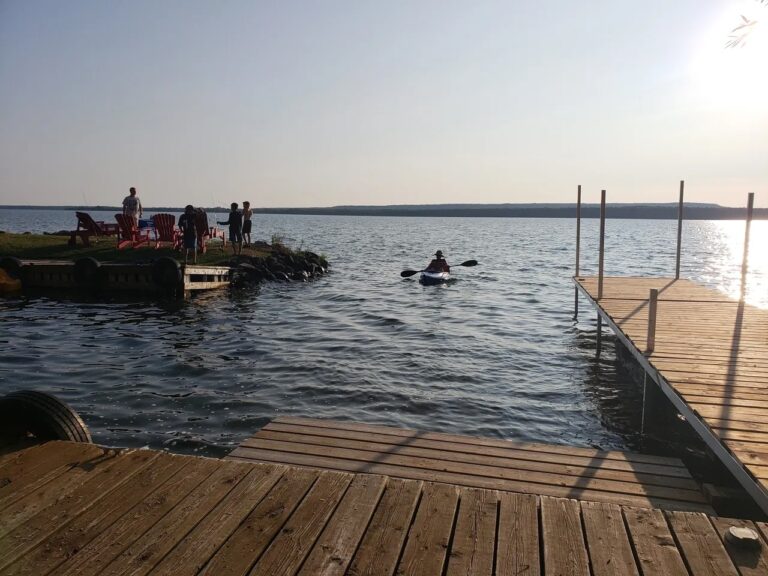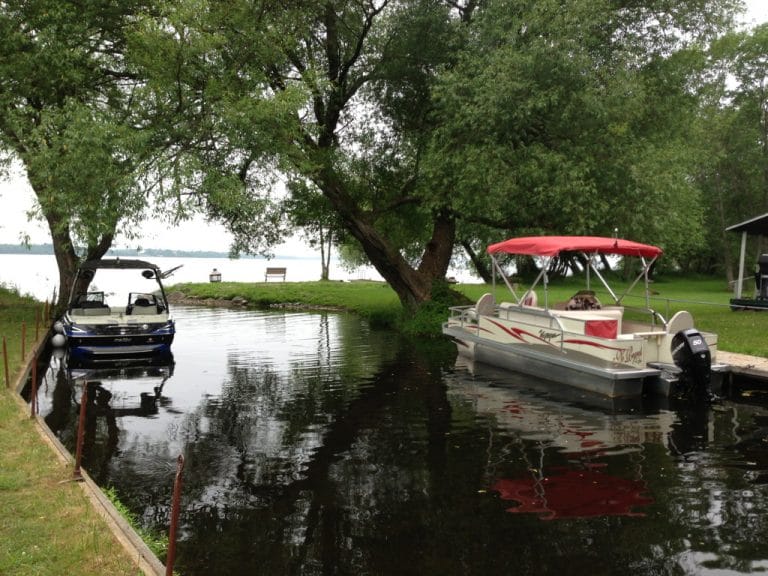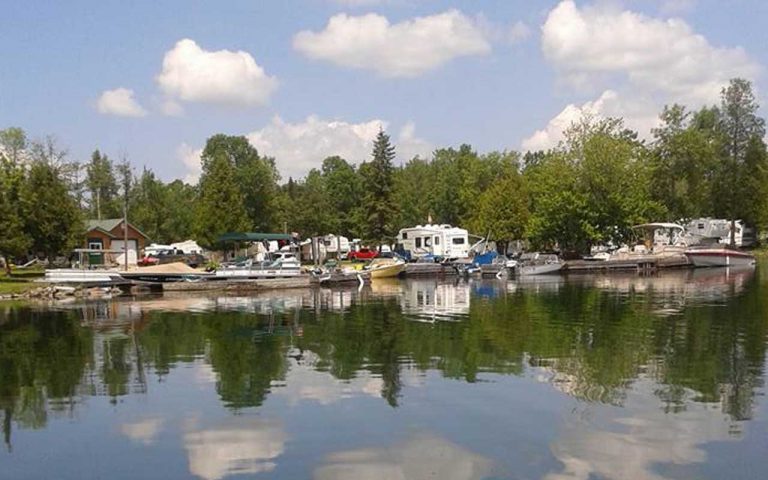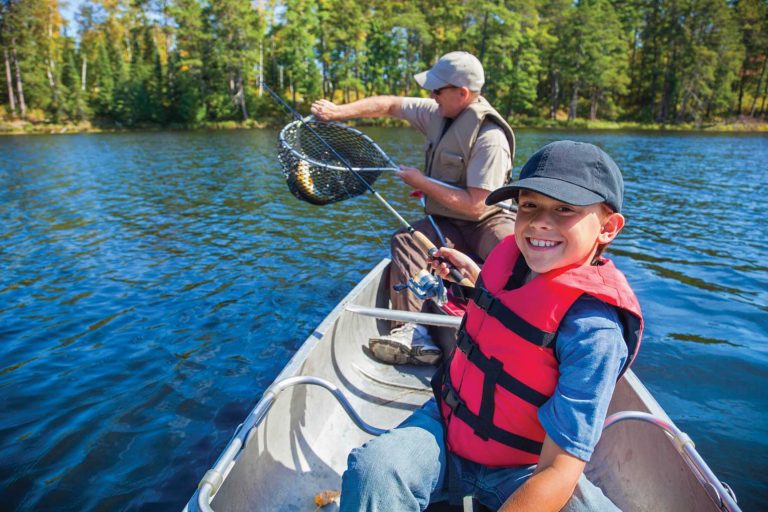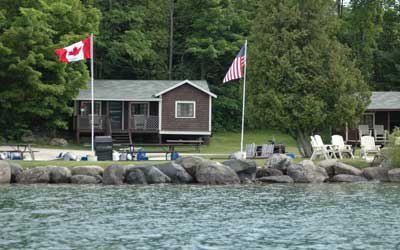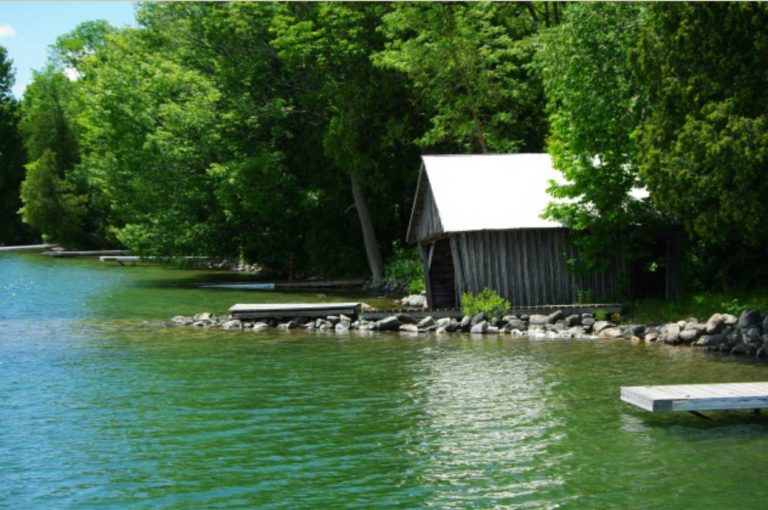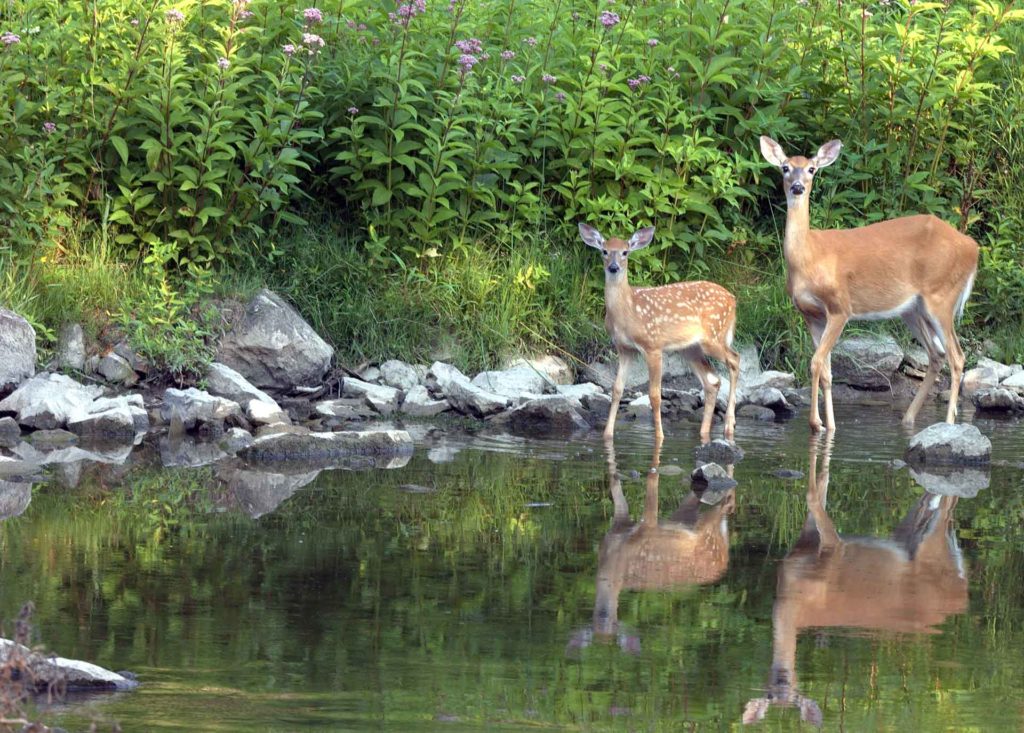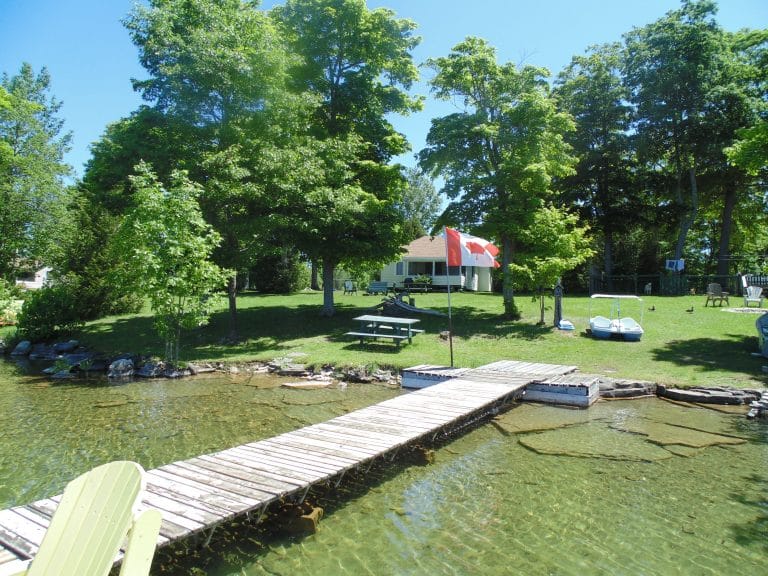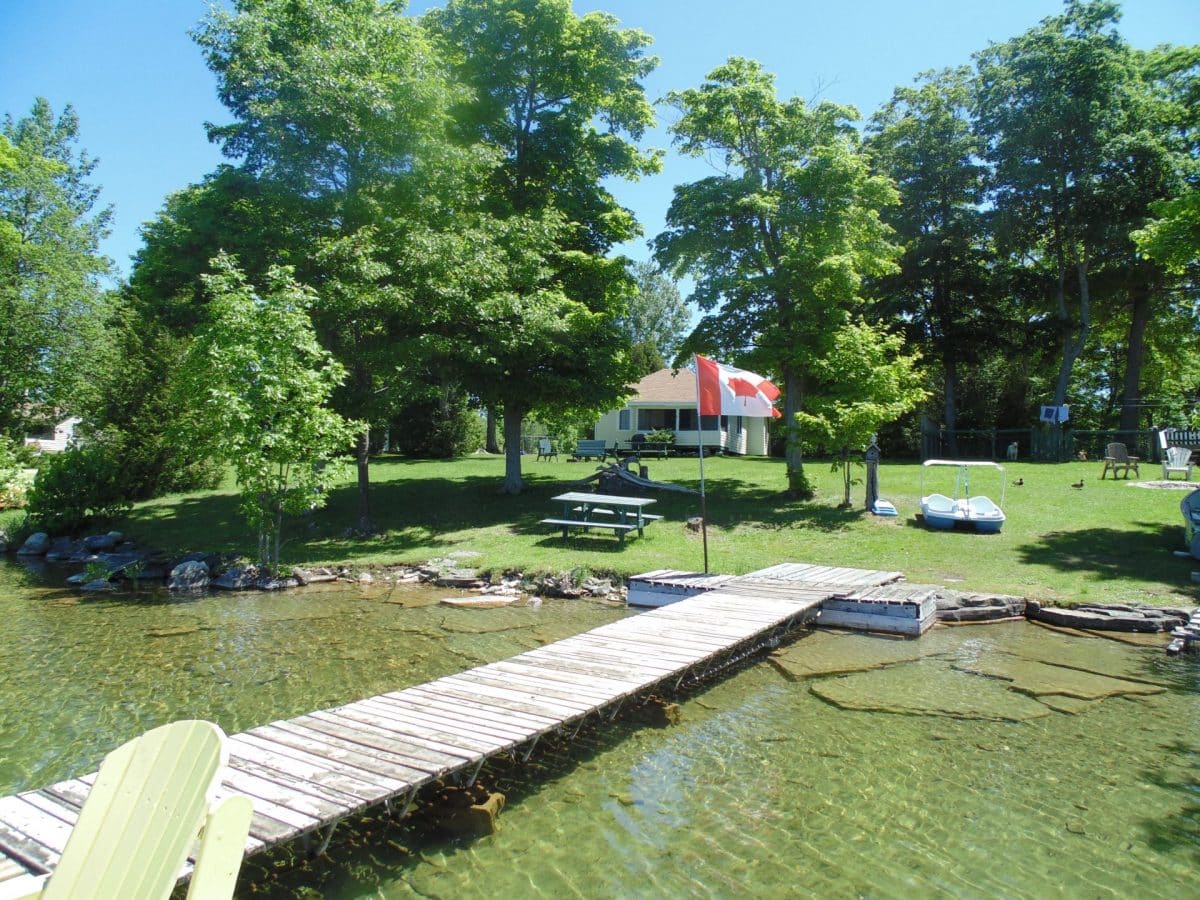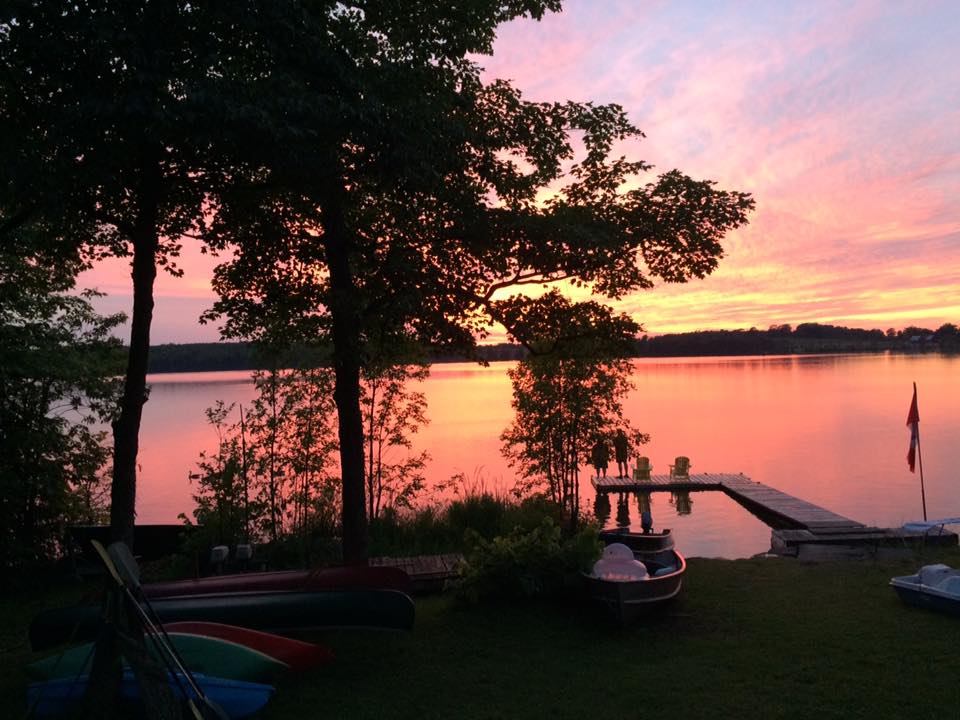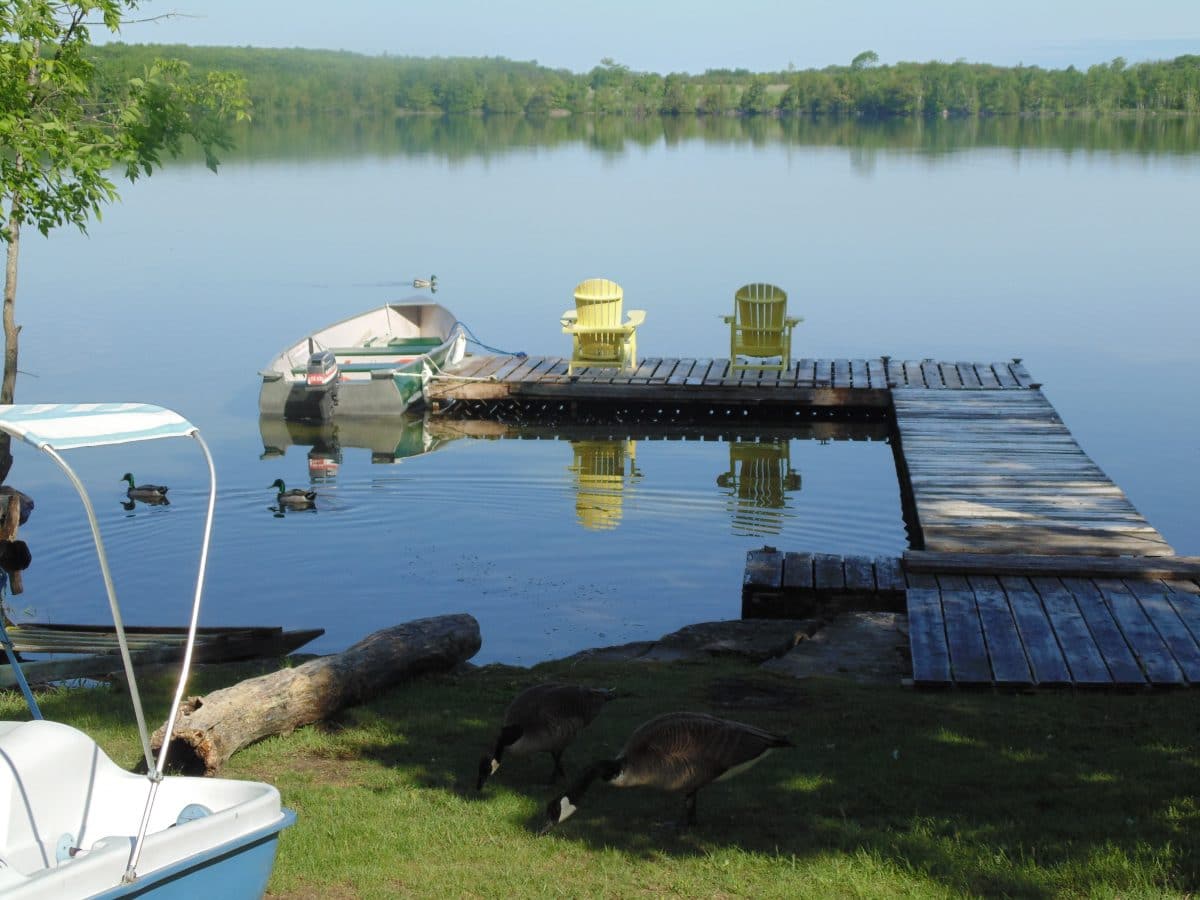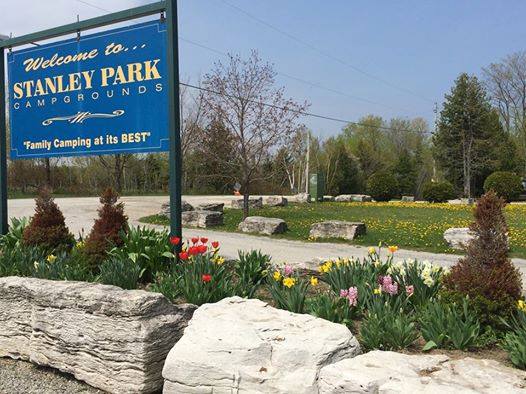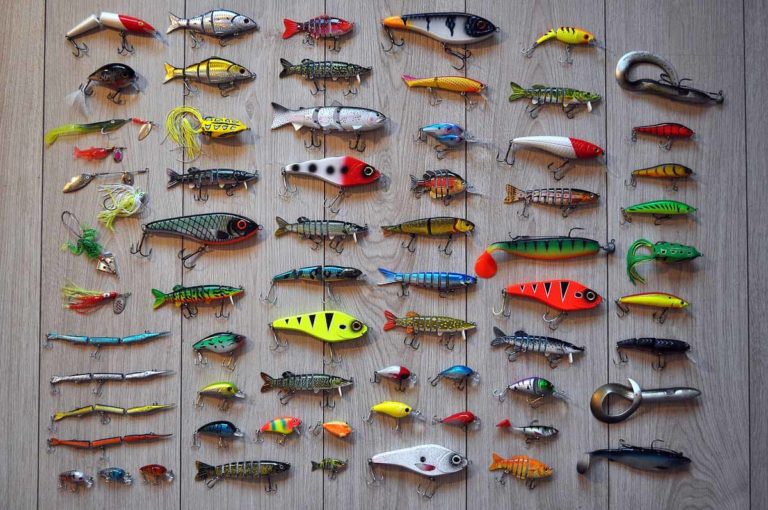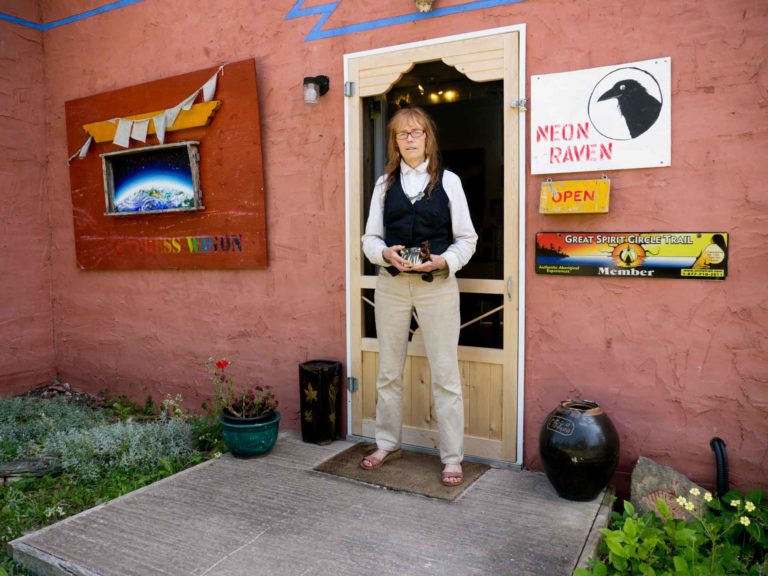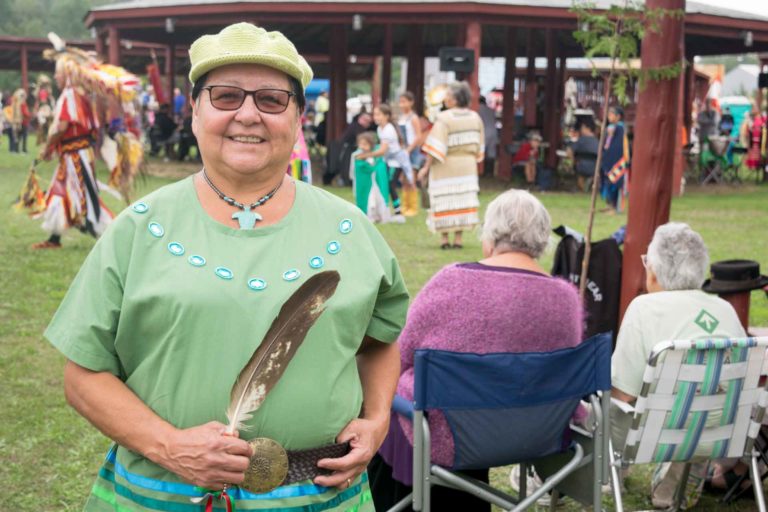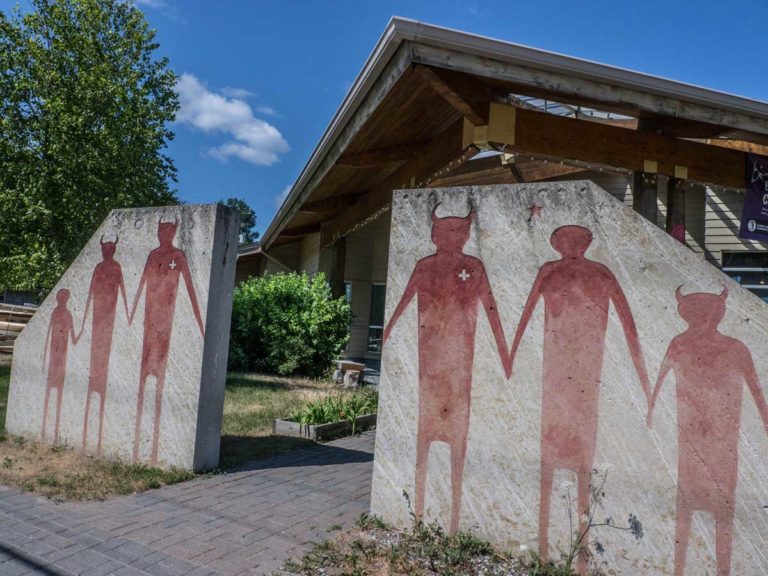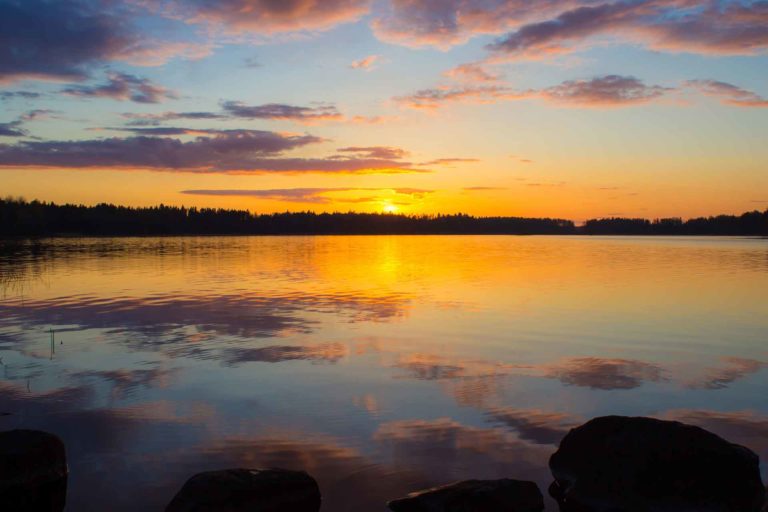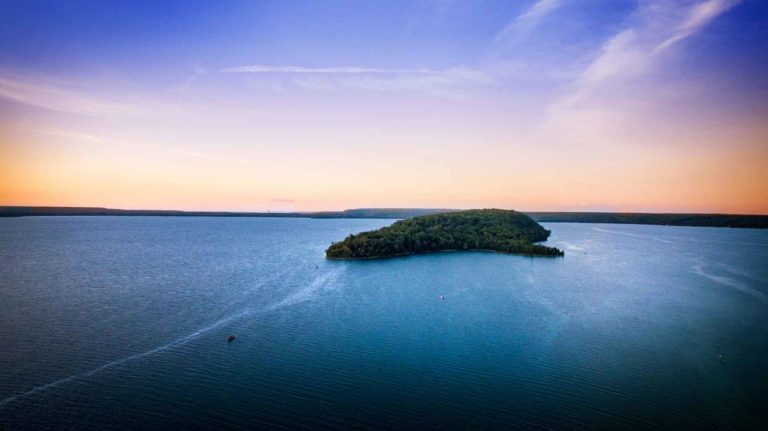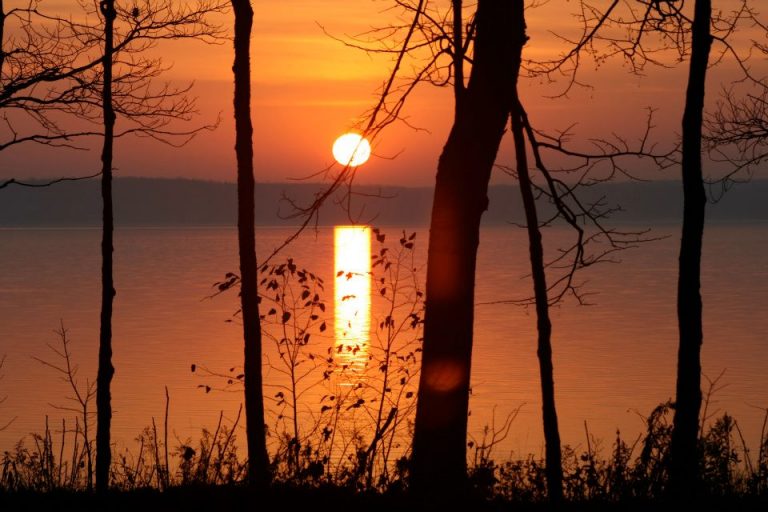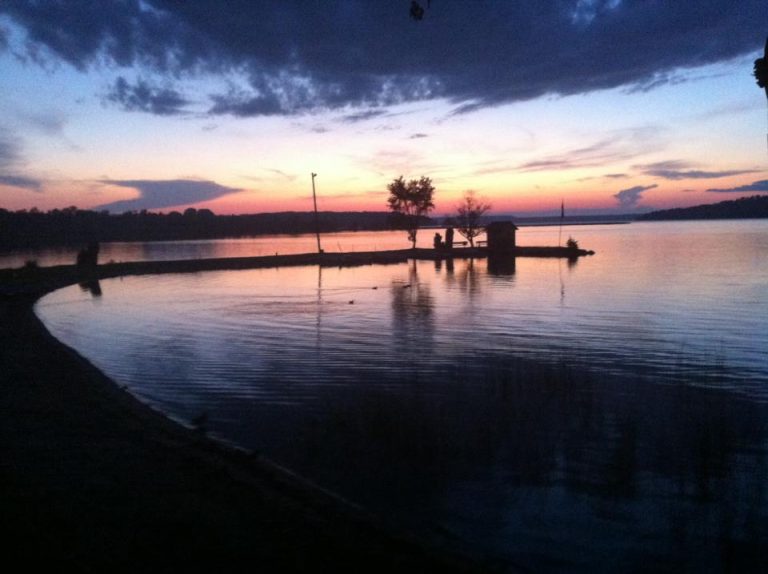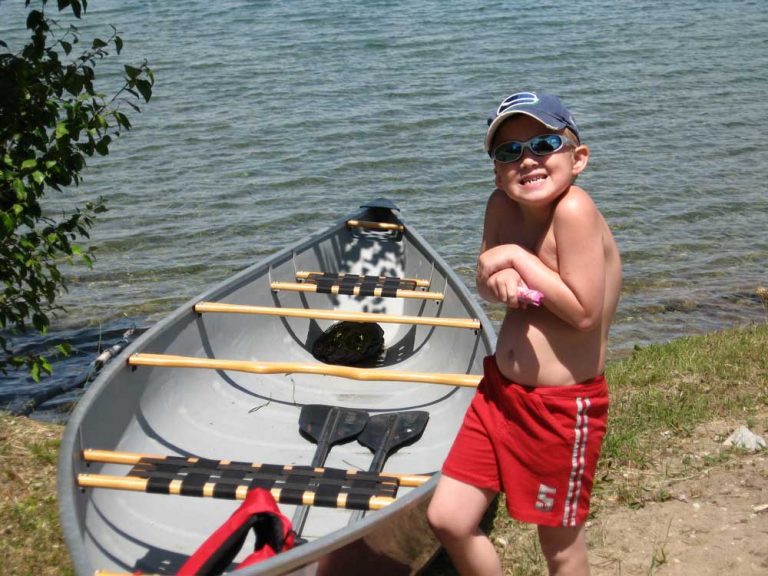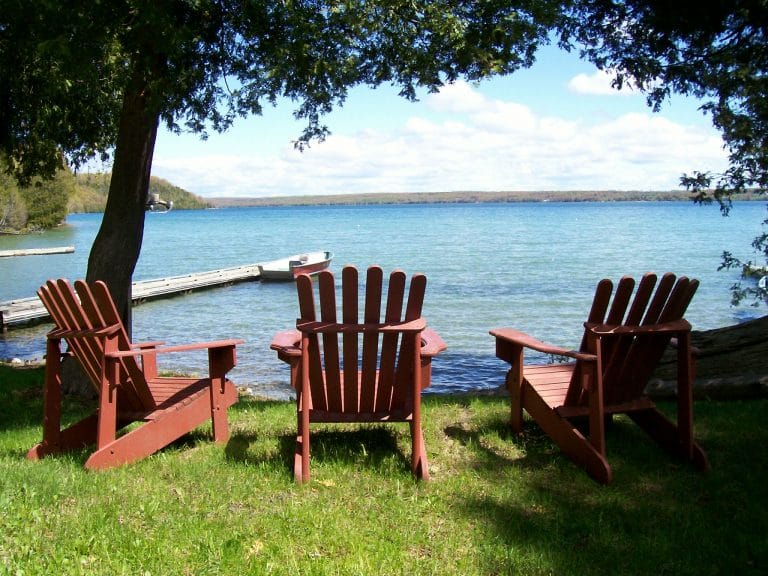Lake Manitou
Keen fishermen may find:
- Perch
- Lake Trout
- Bass
- Walleye
- Speckled Trout
LAKE MANITOU—The largest lake within a fresh water island in the world, with 90 miles of shoreline and depths of up to 162 feet, Lake Manitou is a sublime, nearly unfathomable sprawl of blue.
Perhaps this is why it is named “Manitou,” the Ojibwe word for a spirit or power being, in this case apparently referring to the greatest spirit of all, Kitche Manitou. But Manitou, for all its size, is not an ominous or forbidding lake. Over the years, its surface has been ably plied by everything from canoes and ferries to runabouts and personal watercraft and its exceptionally clear, clean waters offer a paradise for swimmers, anglers and scuba divers.
Yes, it is the deepest lake on the Island. But it is not, notes veteran fishing guide Jack Hayes, as deep as it was once thought to be. “If someone drowned, they would throw out a grappling hook, but they didn’t allow for drift of the line, so they were fooled into thinking it was 300 feet deep.”
Not that the bottom of Manitou is often dragged for bodies. Indeed, Mr. Hayes recalls one drowning: John Wright, a well driller from Mindemoya, went through the ice along with another man while salvaging a vehicle that had sunk the previous week. Mr. Hayes knows the lake as well as anyone. For 35 years he worked as a fishing guide on Manitou, first for Mountainview Lodge and then Timberlane Lodge. He is retired now.
About a 25 years ago he was hired on as boat captain for a hydrographic survey of Manitou. He knows where the fish are, and the reefs too.
“We were depth sounding for shoals, doing surveys for water safety,” he recalls. Since that survey, “a lot of the bad shoals have been marked with buoys,” and a detailed map isavailable showing their whereabouts.
Mr. Hayes notes that all the shoals, and there are a lot, over 400, run in the same direction, northeast to southwest, “because this is the way they were shaped by the glacier.”
Many other land formations on Manitoulin have the same orientation, including the Cup and Saucer Bluff, which, incidentally, provides an excellent panorama of Lake Manitou if you follow the popular hiking trail to its summit.
One particularly dangerous shoal out in the middle of Lake Manitou is named “Acre Shoal.” It may not be the exact size of an acre, but “it runs a good 150 feet, and is all hard rock,” says Mr. Hayes.
Manitou is famous for its fish, which include bass, perch, whitefish, pike and pickerel, but most notably, lake trout and ling. “It’s a natural lake for lake trout; since before the white man, they’ve always been here,” says Mr. Hayes, adding that, apart from Wolsey Lake (which is attached to the North Channel, hence not technically a lake), “it’s the only real lake for lake trout.”
It’s the depth of Manitou that accounts for its lake trout population, but, also, says Mr. Hayes, “its oxygen, and Manitou has a lot of springs.” These factors also explain the presence of ling. “Ling won’t stay anywhere but a clear, deep water lake.”
Clear and deep, that’s Lake Manitou, and clean. Until fairly recently, many people drew drinking water directly from the lake, without filtering.
Carol Sheppard, who operates the Rockville Inn on Green Bay, the northernmost bay on Lake Manitou, and has lived here for many years, says “we used to always get zero/zero readings” on water quality tests, meaning there was absolutely no bacteria or ecoli. The water quality got worse for a while in the 1970s, she says, due to old, substandard septic systems in place at most homes and cottages Now, Manitou is again a remarkably clean lake.
Ms. Sheppard is partly to thank for this. As a councillor of the former Howland Township, she led a drive to get many of the septic systems on the lake inspected through the Ministry of Health and to educate people about water quality.
Her concern began, she says, “when I was on my honeymoon down at Lake Erie. Coming from here, I’d never seen a brown lake before. I had to ask someone why it was that colour.” She says that ever since that wake-up call, she’s been determined to make sure that Lake Manitou retains its uncommon clarity.
And so far, it has. “I’ve scuba dived in this lake, and you can see 10 to 15 feet,” Ms. Sheppard remarks.
She’s also snowmobiled much of the lake and flown over it as well. In March, Ms. Sheppard says, the view from a plane reveals “a whole bunch of air holes”, spots in the ice surface that are either open or only thinly crusted over, a result, she believes, of either a spring or natural gas. “We have a picture of one hole, where it’s just bubbling,” she says.
One time she and her late husband Ron nearly drove a jeep into an air hole during winter, and another time “one of our neighbours (the late Larry Appleby) had his golden retriever fall in one, but he luckily managed to lasso her with a rope just before she drowned.”
It was Ms. Sheppard’s grandfather, Stan Batman (her maiden name is Batman), who first told her about the air holes. He also talked about crossing Lake Manitou in winter with livestock. “If he’d bought a cattle beast in Mindemoya, he’d bring it across Manitou on his way back to Sheguiandah,” the granddaughter says.
In the early days says of Manitoulin settlement, there was also a regular ferry route from the historic community of Van Zant’s Landing, on the southeast shore of the lake (where Manitoulin Resort is now located) to Lehman’s Landing on the lake’s west side, near the present-day turnoff on the Rockville Road to Camp Mary Anne.
Ms. Sheppard’s great-grandfather, Thomas Batman, operated that ferry. And, in a moment of entwined family lore, it was this predecessor of Ms. Sheppard (nee Batman) who “brought old man Sheppard”, aka Albert Sheppard, the grandfather of her late husband, Ron Sheppard, “across the lake,” a phrase that acts as both a literal description of what happened and an euphemism for “delivered him to his future home.”
Albert Sheppard was a locksmith, and his services, so the story goes, were required in Mindemoya, because the safe at the old Wagg’s Store couldn’t be opened. He went to Wagg’s and did his job, but it was the northwest shore of Lake Manitou, experienced during that ferry ride, that stuck with him. “So he decided to settle here in Rockville,” recounts Ms. Sheppard.
Which is where the ferry operator’s great-granddaughter and locksmith’s grandson made their family home and where Ms. Sheppard and one of her sons live to this day.
Nearby places to stay, eat and play
Mindemoya’s Pioneer Museum
Garden’s Gate Restaurant
Cup and Saucer Trail
Red Lodge Resort
Bass Creek Resort
Uncle Steve’s Park and Cabins
Manitoulin Resort
L & J Trailer Park
Timberlane Rustic Cottages
Camp Mary Anne Resort
Rockville is one of many communities, most of them tiny and informal, but formerly bustling and organized, that dot the shores of Lake Manitou.
Apart from Rockville, there’s also Green Bay, Bidwell, Big Lake (just inland from Manitou) and Sandfield. The latter is the most happening community these days, but the others all sported post offices and school houses and churches in their day, and many of those buildings still stand.
If you tour the lake by boat or drive some of the cottage roads, you are also apt to glimpse a style of architecture that seems, if not unique to Lake Manitou, certainly most plentiful here: the so-called cedar pole building. Many cottages and lodges on the lake are constructed in this manner, in which the cedar logs are aligned vertically with the bark left on.
Ms. Sheppard says that most of these buildings, in the northern part of the lake, at any rate, are the work of the late Alfred Spry, who, true to his name, was spry to a ripe old age. So was his wife Lily Spry (nee Snow), who, despite going blind at the age of 27, worked as a midwife and lived to the age of 104.
Ms. Sheppard’s grandfather, Stan Batman, lived to 102.
And they all, presumably, drank water straight out of Lake Manitou!
One could probably do so now, too, but it is recommended that you filter or treat the water. As Mrs. Sheppard notes, “after Walkerton, you can never be too careful.”
But even if you aren’t dipping a cup straight into the lake, Manitou’s crisp, clear waters, teeming with lake trout and bass and perch, and home to numerous pairs of loons, cry out to be experienced up close, ideally by boat or by actually immersing yourself.
Public boat access to Lake Manitou is provided in three locations: at Newby’s Bay (on the Rockville Road southwest of the community of Rockville), at Sandfield, and just beside Manitoulin Resort (just off the Bidwell Road and very close to Manitowaing.)
There is also a wonderful little public beach at the tip of Green Bay where the Bidwell Road meets the lake. The spot is known as the John Dunlop Memorial Park.
Alternatively, you can hike the Cup and Saucer trail, and gaze out over the breath-catching immensity of the lake.
You won’t see it all, even from this promontory, but you’ll get s good sense of its grandeur.

